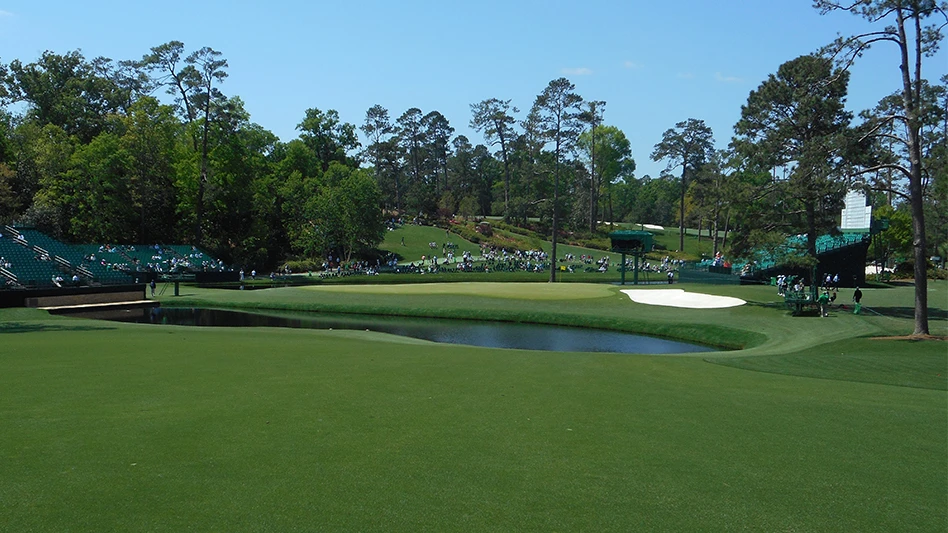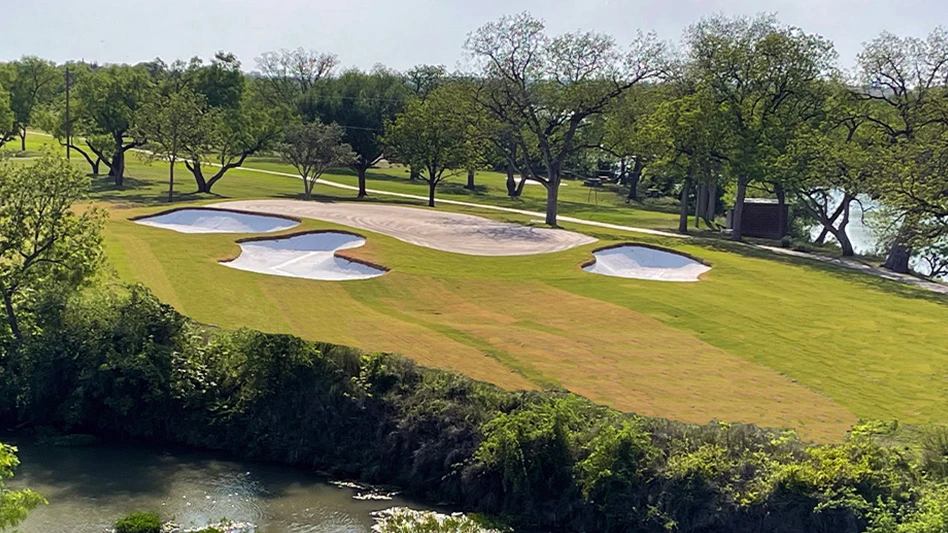A superintendent’s duties range beyond managing a golf course for playability. In fact, many are charged with not only presenting players a course with unique characteristics, but doing so on a constrained budget and by demonstrating sustainable land use. What many golf course superintendents might not realize is that incorporating ornamental grasses into their courses can help them accomplish many of these goals.
Character
Ornamental grasses can serve as fillers or specimens, border plants or background plantings and as groundcovers or screens.
Their adaptability and subtle beauty make them perfect companions to flowering plants and other woody ornamentals. And clumped together, ornamental grasses create an area requiring less water and fertilization than other planting beds.
Ornamental grasses are available in a wide array of colors, shapes, textures and sizes. The flowers and subsequent seed heads are equally diverse, ranging from understated to truly spectacular.
Likewise, each grass species has its own unique form. They may form low compact mounds, tall screens or densely spreading mats. The foliage colors include various shades of green, blue and red, as well as variegated varieties having red, white or yellow foliage banded with ivory or yellow stripes.
In the fall, spring and summer their colors change to hues of red, beige or brown, providing a great winter garden accent. The flower spikes also offer a diversity of colors.
Ornamental grasses also add a dimension of motion and sound to an environment. And often these animated movements will change with the seasons.
Maintenance
Once established, ornamental grasses require very little care. Unlike greens and fairways, ornamental grasses are low-maintenance, have low water demands, attract few pests and have low fertilization requirements.
These durable, low-maintenance plants not only add distinction to a landscape during the summer months, but they are quite dramatic in a winter landscape, as well.
Grasses do not need to be cut down before winter. In fact, they remain attractive when left standing and the foliage helps insulate the plant’s crown. In the spring, before growth resumes, superintendents are advised to cut back the foliage to a height of 4 to 6 inches. Division depends on the spacing and visual appearance of the ornamental grass, as well as its overall health.
Plants suffering from die-out in the center should be divided to improve appearances. Division is done in the spring before growth resumes or in the late summer or fall after the growing season. Plants that bloom late could be divided in the spring.
Divided plants should be well watered the first season after planting to develop a solid root system. Established plants do not need regular watering, earning them a drought-tolerant reputation. The amount of watering depends on the grass species, the site and on the quality, size and desired growth rate.
Likewise, most ornamental grasses require low levels of fertilization. By keeping nitrogen levels low, lodging or flopping over can be kept to a minimum. Leaf color and vigor are good guides to nitrogen requirements. Application of one-half to one pound of 10-10-10 fertilizer per 100 sq. ft. of garden area, or about one-quarter cup per plant, is sufficient. An application of a slow-release fertilizer just as growth resumes in the spring is enough to take care of the plant’s needs throughout the summer.
For weed control, cultivate around grass plants. An application of mulch reduces the need for cultivation and watering, and it will keep in check those grasses that have a tendency to be heavy seeders. With few pests and diseases, ornamental grasses require few if any pesticide applications.
Warm- and cool-season Selection
Grasses respond and start to grow based upon soil temperature.
Cool-season grasses will start to grow early in the spring and may remain semi-evergreen over the winter. Cool-season grasses also seem to do better and have better foliage quality when temperatures are cool or if they are given sufficient water during drought periods. If they are not watered during drought, then they will go dormant resulting in brown foliage. These grasses may require more frequent division to keep them healthy looking and vigorous. If not, they will die out in the center.
For those grasses that remain semi-evergreen, you should only cut off the brown or winter-injured foliage in the spring. Some of the more popular cool-season grasses include fescues, blue oat grass (Helictotrichon), tufted hair grass (Deschampsia), and autumn moor grass (Sesleria).
Warm-season grasses will do better during warmer times of the year and remain good looking even when temperatures are high and moisture is limited. Warm-season grasses do not begin to show growth until the weather becomes stable and the soils warm. The previous season’s growth usually browns out in the fall and requires the cutting back of plants to a height of between 4 to 6 inches in the spring. Warm-season grasses usually do not require as frequent division as cool-season grasses. Some warm-season grasses include northern sea oats (Chasmanthium), Japanese silver grass (Miscanthus), hardy pampas grass (Erianthus), perennial fountain grass (Pennisetum), switch grass (Panicum) and prairie cord grass (Spartina).
No fall or winter landscape should be without a tall ornamental grass. Plume grass (Erianthus ravennae) is found in zones 4 through 9 and it grows to a height of between 8 and 11 feet with a clump that spreads up to 4 feet. This plant – with its tall, thin shafts and fluffy coiffures – exhibits a delicate structure that lends a touch of charm to a harsh winter landscape. Because of its height, a plant such as plume grass can be used as a focal point in a ornamental bed or landscape setting.
Maiden grass (Miscanthus sinensis ‘Gracillimus’) is a fine choice in zones 5 through 9 for a tall, drought-tolerant ornamental grass, as it reaches a height of 7 feet, with a spread a bit less than that. Maiden grass bears coppery tassels as a seed head in early fall, eventually growing lighter in color and adorning the plant as a “plume.” It’s advised not to cut the clump’s stems back until after the bleakness of winter passes, since the graceful stems and puffy plumes of this plant will provide some visual interest on an otherwise barren December through February landscape.
Blue oat grass (Helictotrichon sempervirens) is a cool-season ornamental grass that can be grown in zones 4 through 8 and is effective for deer control. This ornamental grass grows in a 3-foot mound. If you wish to enjoy the signature blue hues of its foliage to the fullest, then grow it in full sun and well-drained soils. The plant also produces spiky, dark flowers with a bluish tint in summer that turn harvest gold in autumn.
Another favorite, northern sea oats (Chasmanthium latifolium), is an ornamental grass that grows to a height of 3 feet in loose clumps of green foliage. Its name derives from its seed pods, which resemble oats. This deer-resistant ornamental grass is cold hardy to zone 5. Even after its leaves have died, it provides visual interest to the winter landscape.
For a shorter, deer-resistant ornamental grass, try lilyturf (Liriope spicata). Lilyturf ornamental grass can be grown in zones 4 through 10 and reaches about a foot in height. Lilyturf likes water, but also does well in well-drained soil. For best results select an area with partial shade and soil rich in organic matter. This ornamental grass has a spiky flower, ranging in color from white to lavender. In autumn it bears a dark berry. Be warned: You’ll want to contain this plant, because it is enviously.
Another short ornamental grass grown in zones 4 through 8 is blue fescue (Festuca glauca). The popularity of this clumping, drought-tolerant ornamental grass lies in the blue color of its foliage, which complements any surrounding plants with silvery foliage, such as lamb’s ears. The plant resembles a pincushion bristling with blue pins. As with maiden grass, cut back foliage in early spring. Divide every few years to rejuvenate.
Call to action
Doing your part in establishing ornamental grass areas on a golf course will help you meet reduced pesticide, fertilizer and water demands.
States such as New Jersey, Florida, Minnesota are considering the adoption of fertilizer restrictions that would impacting golf and other green industry sectors.
If you are in New Jersey visit the New Jersey Green Industry Council Web site: njgic.org/ for more information on this topic. Those outside of New Jersey are encouraged to visit Responsible Industry for Sound Environment Web site: www.pestfacts.org/rise/index.html for an advocacy group in your area.
Your voice is needed to demand sound science guide future laws and regulations. GCI
Nancy Sadlon is the executive director of the New Jersey Green Industry Council, a nonprofit organization whose mission is to secure reasonable regulations and laws for golf and other sectors in the green industry.

Explore the May 2010 Issue
Check out more from this issue and find your next story to read.
Latest from Golf Course Industry
- PBI-Gordon promotes Jeff Marvin
- USGA investing $1 million into Western Pennsylvania public golf
- KemperSports taps new strategy EVP
- Audubon International marks Earth Day in growth mode
- Editor’s notebook: Do your part
- Greens with Envy 66: A Southern spring road trip
- GCSAA’s Rounds 4 Research auction begins
- Quali-Pro hires new technical services manager





